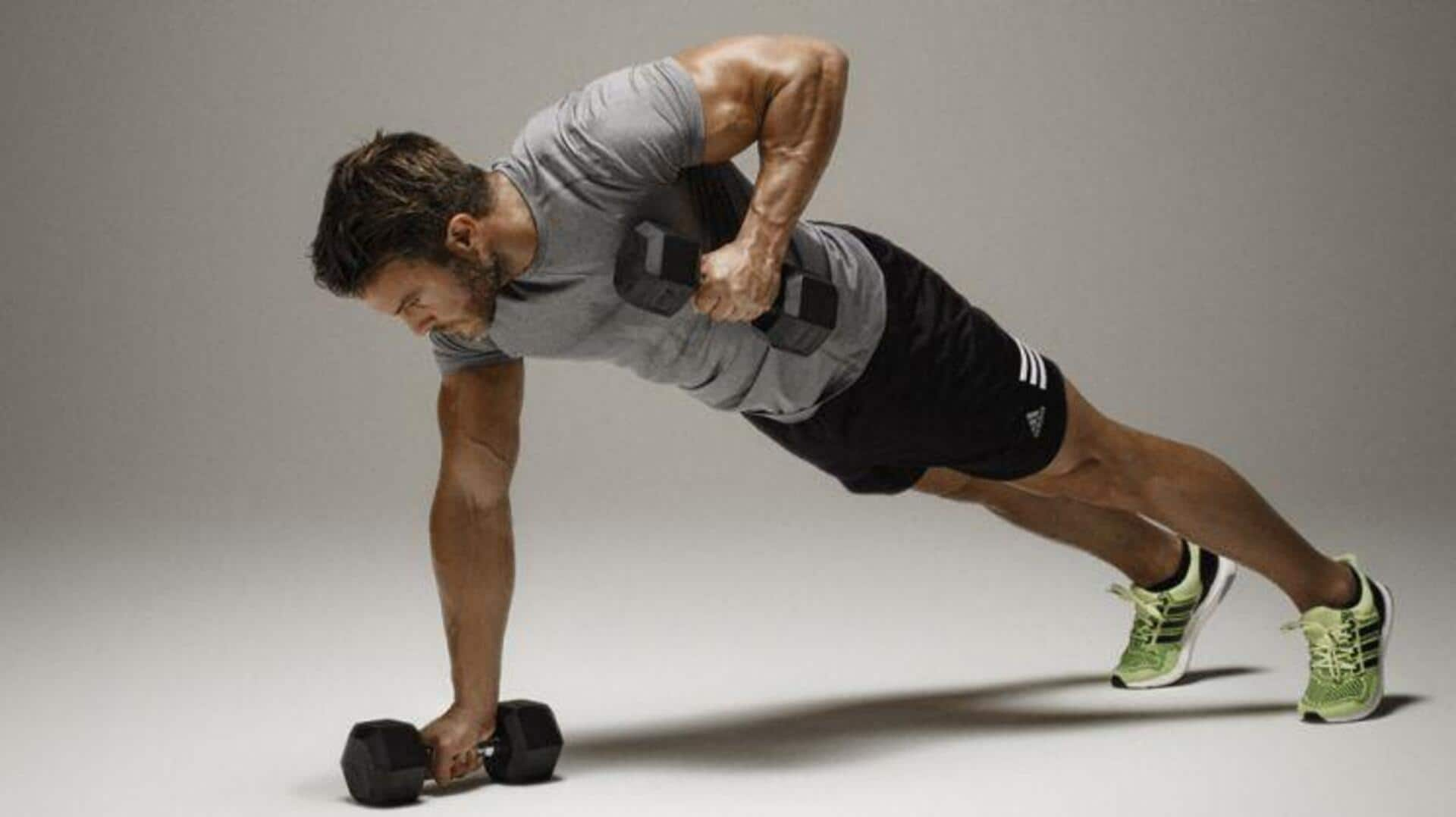
Strengthen your core with renegade rows
What's the story
Renegade rows improve your core stability and overall strength by working multiple muscle groups, core, back, and shoulders. Including this exercise in your regimen improves your balance, coordination, and endurance. Knowing the right technique and its variations is essential to getting the maximum benefits and lowering injury risks.
Technique
Proper form is key
Maintaining proper form during renegade rows is important to target the right muscles and avoid injuries. Start in a plank position with hands gripping dumbbells placed shoulder-width apart. Keep your body straight from head to heels, engaging your core throughout the movement. Row one dumbbell towards your hip while stabilizing with the opposite arm and maintaining balance. Alternate sides while keeping hips level to ensure maximum engagement of stabilizing muscles.
Variations
Incorporate variations
To keep your workouts challenging and effective, incorporate different variations of renegade rows into your routine. For added difficulty, try performing them on an unstable surface like a Bosu ball or using kettlebells instead of dumbbells. You can also add a push-up between each row to increase intensity or perform single-arm renegade rows to focus on unilateral strength development.
Breathing
Focus on breathing techniques
Proper breathing techniques further enhance performance during renegade rows by providing stability and control. Inhale deeply before initiating each row. Exhale as you pull the weight towards your hip while maintaining tension in your core muscles. Controlled breathing helps maintain focus, reduces fatigue, and ensures efficient oxygen delivery to working muscles.
Progression
Gradually increase resistance
Progressive overload is key to improving your strength and stability when it comes to renegade rows. Start with lighter weights where you can maintain form through all reps without sacrificing technique or risking injury from too much strain on joints or muscles involved in this compound movement pattern.